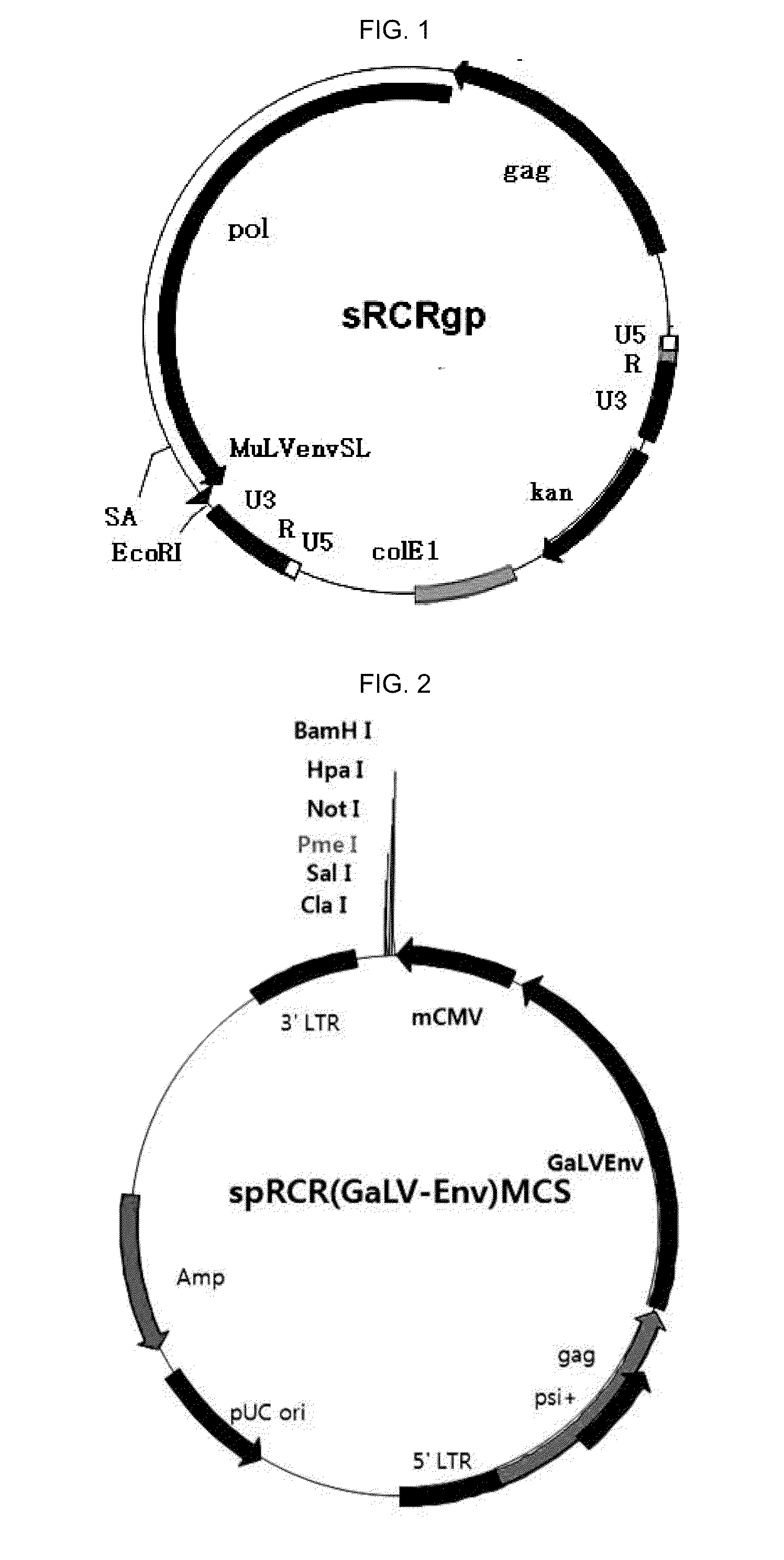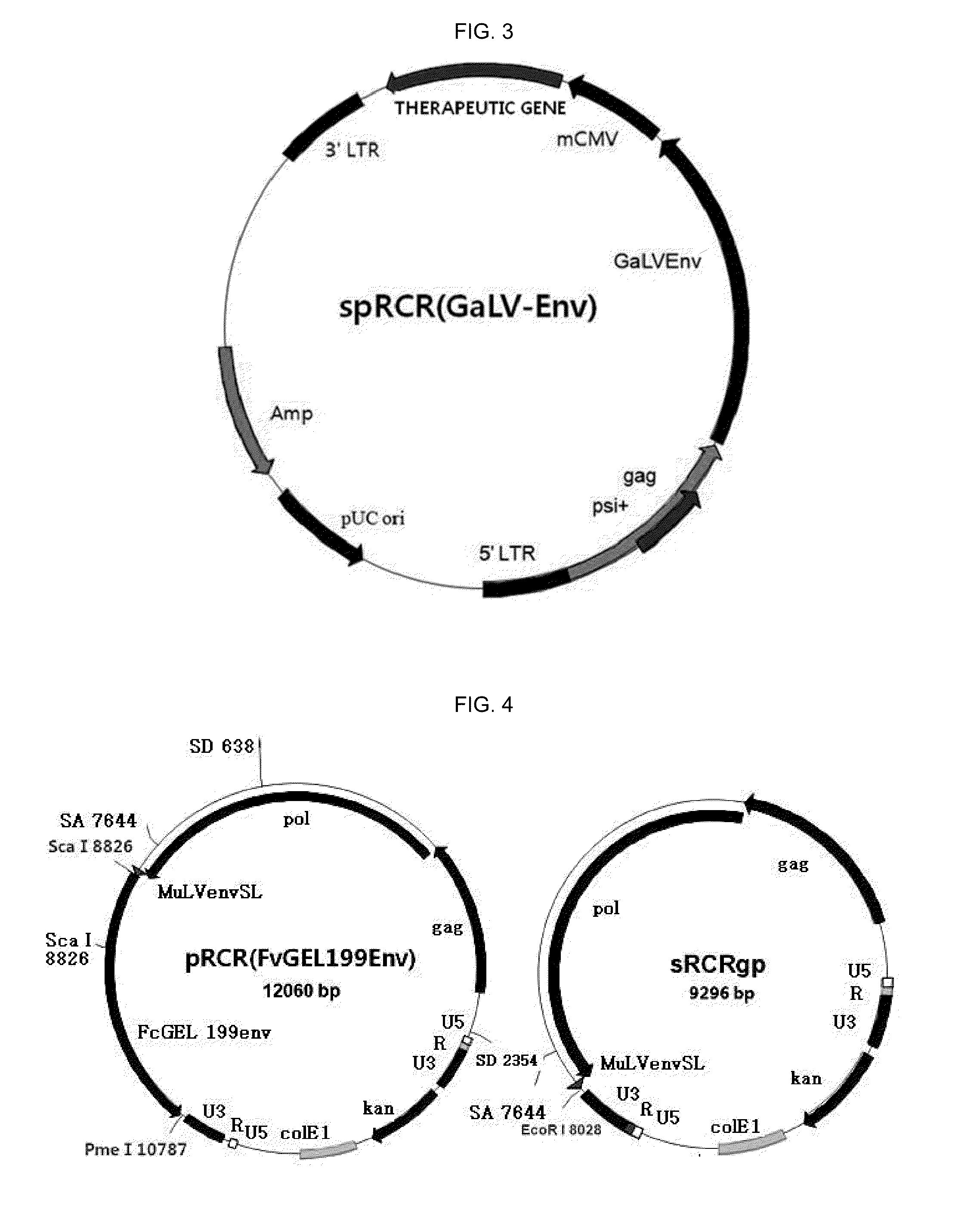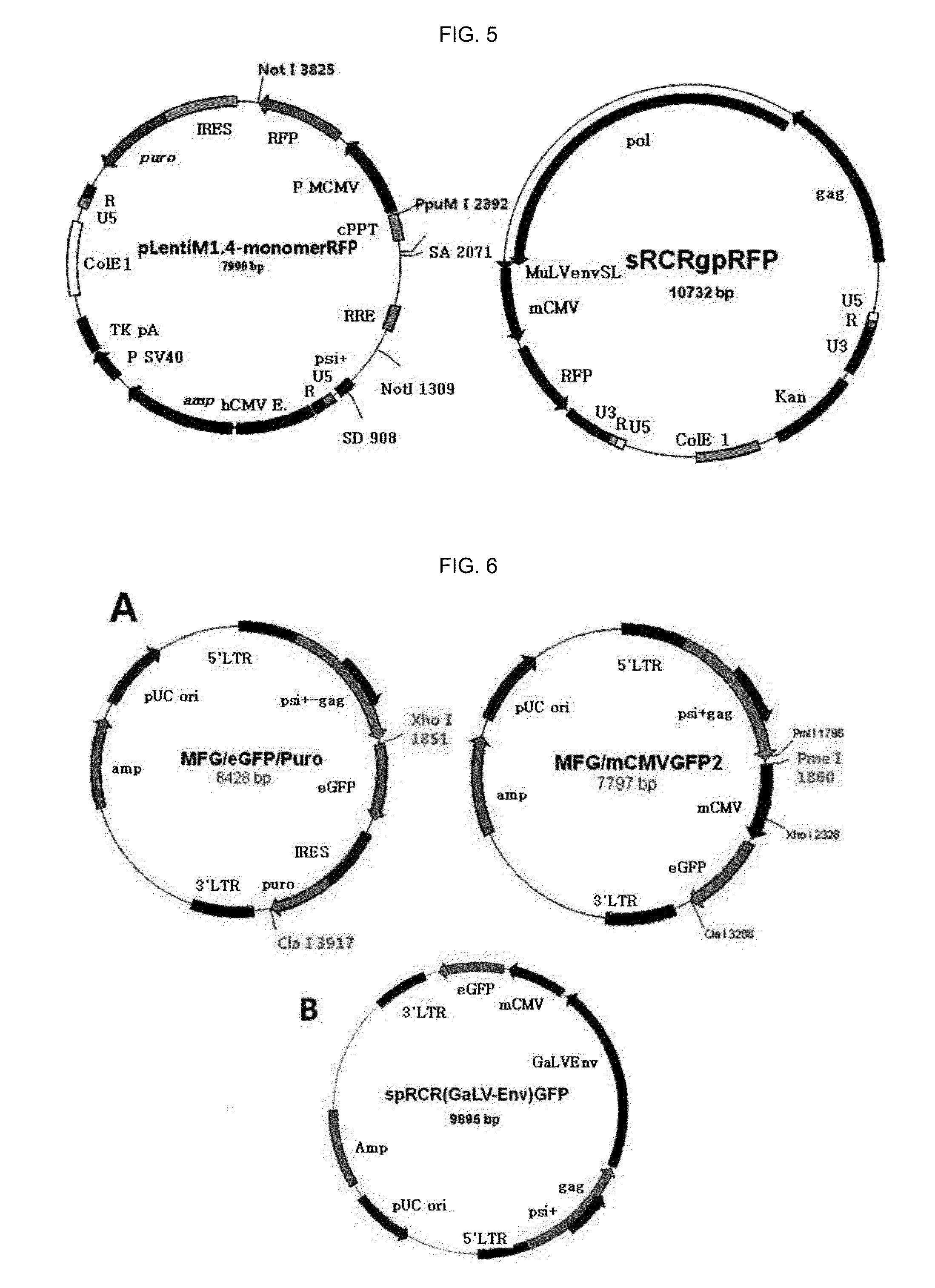Replication competent pseudo-type retrovirus vector system
a vector system and pseudo-type technology, applied in the direction of transferases, peptide/protein ingredients, drug compositions, etc., can solve the problems of limited therapeutic effects of some types of head and neck cancer, cancer gene therapy is not successful as much as expected, and the use of oncolytic adenovirus vectors for anti-cancer gene therapy, etc., to achieve efficient killing
- Summary
- Abstract
- Description
- Claims
- Application Information
AI Technical Summary
Benefits of technology
Problems solved by technology
Method used
Image
Examples
example
Example 1
Cell Culture
[0129]293T (human embryonic kidney) cells and U-87 MG (human glioma) cells were cultured in Dulbecco's Minimal Essential Medium (DMEM, Thermo Hyclone) to which 10% fetal bovine serum (Invitrogen) and antibiotics (Invitrogen) were added. In all experiments, cells were cultured in a cell culture vessel (e.g., a 100 mm dish and a 6-well plate) in a 5% CO2 incubator, and then, were subjected to subcloning at a ratio of 1:5 when the frequency of the cultured cells reached 70% to 80%.
example 2
Manufacture of Vector
[0130]In order to manufacture a sRCRgp-RFP vector carrying a marker gene, RFP (see FIGS. 4 and 5), a FvGeI199Env gene of a pRCR (FvGEL199Env) vector was cut and removed by Sca I and Pme I. Genes from an mCMV promoter to a RFP gene of a pLenti M1.4-momomerRFP vector were cut by PpuM I and Not I, thereby connecting the genes to the pRCR (FvGEL199Env) vector by blunt end ligation.
[0131]In order to manufacture a spRCRe (GaLV-Env)-GFP vector carrying a marker gene, GFP (see FIG. 6), an Xho I site in downstream of a gag gene and a Cla I site in upstream of 3′LTR of a MFG-eGFP-Puro vector were cut and removed. Genes from an mCMV gene to an eGFP gene, which were cut from a pLenti M1.4-eGFP vector, were amplified by PCR for ligation, thereby manufacturing a MFG-mCMV-GFP2 vector (Forward: Sal I-Pme I-mCMV, Reverse: Cla I-GFP). In order to insert a GaLV-Env sequence to a site between the Gag gene and the mCMV gene of the MFG-mCMV-GFP2 vector, PCR was performed by using a M...
example 3
Virus Production
[0136]One day before performing transfection, 293T cells were inoculated with a growth medium at 6×105 cells / well in a 6-well plate. Next day, 1 ml of the growth medium was replaced by an FBS-free DMEM medium. The 6-well plate was placed again in an incubator, and 100 μl / well of a DMEM medium was added to two separate 1.5 ml tubes. DNA (total 1 μg) of Tables above and PLUS reagent (Invitrogen) (5 μl / well) were added to one tube while lipopectamine reagent (Invitrogen) (3 μl / well) was added to another tube, and each of which tubes was vortexed for 10 seconds. After culturing at room temperature for 15 minutes, a solution from the lipopectamine-containing tube was added to the PLUS-containing tube, and then, the PLUS-containing tube was vortexed again for 10 seconds. After culturing at room temperature for 20 minutes, the plate where the cells underlay at the bottom of the plate was taken out from the incubator, and 208 μl / well of the cells was added dropwise without l...
PUM
| Property | Measurement | Unit |
|---|---|---|
| concentration | aaaaa | aaaaa |
| concentrations | aaaaa | aaaaa |
| concentrations | aaaaa | aaaaa |
Abstract
Description
Claims
Application Information
 Login to View More
Login to View More - Generate Ideas
- Intellectual Property
- Life Sciences
- Materials
- Tech Scout
- Unparalleled Data Quality
- Higher Quality Content
- 60% Fewer Hallucinations
Browse by: Latest US Patents, China's latest patents, Technical Efficacy Thesaurus, Application Domain, Technology Topic, Popular Technical Reports.
© 2025 PatSnap. All rights reserved.Legal|Privacy policy|Modern Slavery Act Transparency Statement|Sitemap|About US| Contact US: help@patsnap.com



